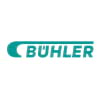Global Thermoplastic Elastomers Market, By Product Type (Styrene Block Copolymers (TPE-S), Thermoplastic Polyolefin, Thermoplastic Olefins (TPE-O), Elastomeric Alloys (TPE-V or TPV), Thermoplastic Polyurethanes (TPU), Thermoplastic Co-polyester, Thermoplastic Polyamides), Application (Automotive, Building and Construction, Electrical and Electronics, Household Appliances, Medical, Adhesives, Sealants and Coatings, Footwear, HVAC, Others) - Industry Trends and Forecast to 2030.
Thermoplastic Elastomers Market Analysis and Size
Building and construction activities drive the global thermoplastic elastomers market by creating demand for flexible, weather-resistant, and durable materials. TPEs are used extensively in applications such as seals, gaskets, roofing, and insulation, making them essential in modern construction, thus boosting global thermoplastic elastomers market. The essential factors contributing to the growth of the global thermoplastic elastomers market in the forecast period of 2023 to 2030 include the rising construction activities and infrastructural development. Also, the increasing demand across verticals is significantly contributing to the market’s growth.
Data Bridge Market Research analyses that the global thermoplastic elastomers market which was USD 21.13 billion in 2022, is expected to reach USD 34.20 billion by 2030, growing at a CAGR of 6.2 % during the forecast period of 2023 to 2030. In 2023, “building and construction” from application segment will dominate the market due to the rise in construction activities and infrastructural development. In addition to the insights on market scenarios such as market value, growth rate, segmentation, geographical coverage, and major players, the market reports curated by the Data Bridge Market Research also include in-depth expert analysis, geographically represented company-wise production and capacity, network layouts of distributors and partners, detailed and updated price trend analysis and deficit analysis of supply chain and demand.
Thermoplastic Elastomers Market Scope and Segmentation
|
Report Metric |
Details |
|
Forecast Period |
2023 to 2030 |
|
Base Year |
2022 |
|
Historic Years |
2021 (Customizable to 2015-2020) |
|
Quantitative Units |
Revenue in USD Billion |
|
Segments Covered |
Product Type (Styrene Block Copolymers (TPE-S), Thermoplastic Polyolefin, Thermoplastic Olefins (TPE-O), Elastomeric Alloys (TPE-V or TPV), Thermoplastic Polyurethanes (TPU), Thermoplastic Co-polyester, Thermoplastic Polyamides), Application (Automotive, Building and Construction, Electrical and Electronics, Household Appliances, Medical, Adhesives, Sealants and Coatings, Footwear, HVAC, Others) |
|
Countries Covered |
U.S., Canada, Mexico, Germany, Italy, U.K., France, Spain, Netherlands, Belgium, Switzerland, Turkey, Russia, Rest of Europe, Japan, China, India, South Korea, Australia, Singapore, Malaysia, Thailand, Indonesia, Philippines, Rest of Asia- Pacific, Brazil, Argentina, Rest of South America, South Africa, Saudi Arabia, U.A.E., Egypt, Israel, Rest of Middle East and Africa |
|
Market Players Covered |
Arkema (France), Asahi Kasei Corporation (Japan), BASF SE (Germany), Dow (U.S), Covestro AG (Germany), Huntsman International LLC. (U.S.), Teknor Apex (U.S.), The Lubrizol Corporation (U.S.), Tosh Corporation (Japan), Kraton Corporation (U.S.), China Petroleum Corporation (China), Mitsubishi Chemical Company (Japan), DuPont (U.S.), SIBUR (Russia), Corporate. Evonik (Germany), Dynasol Group (Spain) |
|
Market Opportunities |
|
Market Definition
Thermoplastic elastomers also known as plastic wrap, food wrap, saran wrap, and stretch film is a thin transparent plastic film that sticks to surfaces and to itself and is used to wrap food in containers. Thermoplastic elastomers are high-quality food wrap films that keep food fresh, protect it from insects and microbiological contamination, and reduce the risk of food waste by extending its shelf life.
Global Thermoplastic Elastomers Market Dynamics
Drivers
- The Rising Construction Activities and Infrastructural Development
Growing construction activities and infrastructural development drive the global thermoplastic elastomers (TPE) market by increasing the demand for flexible, durable, and weather-resistant materials. TPEs are used in various construction applications, such as seals, gaskets, roofing materials, and insulation due to their versatility and cost-effectiveness. As construction projects expand worldwide, the demand for TPEs grows, making them a crucial component in modern construction materials and contributing to the growth of the global TPE market.
- Increased Demand across Verticals
The increasing adoption of thermoplastic elastomers by the end-user verticals such as the automotive, building and construction, electrical and electronics, household appliances, medical, adhesives, sealants and coatings, footwear, HVAC and others across the globe is estimated to carve a way for the growth of the market. The thermoplastic elastomers is highly utilized in the healthcare industry to make medical equipment such as catheters, medication delivery tubes, surgical tool grips, and various implants, among other things.
Opportunities
- Development of Sustainable Products
The development of sustainable products in the global thermoplastic elastomers market can offer significant opportunities for businesses. TPEs are a versatile class of materials used in various applications due to their elastic and thermoplastic properties. Using recycled TPEs or incorporating post-consumer and post-industrial recycled materials into the product formulations. This reduces the environmental impact of manufacturing and provides a selling point for environmentally conscious customers.
- Surging Demand for Bio-Based Thermoplastic Elastomers
The surging demand for bio-based thermoplastic elastomers presents significant opportunities in the global thermoplastic elastomers market. Bio-based TPEs are derived from renewable resources and offer several advantages, including reduced environmental impact and increased sustainability. The demand for bio-based TPEs is driven by a global shift toward sustainable and environmentally friendly materials. This trend is likely to continue growing as consumers and industries prioritize eco-conscious choices.
Restraint/Challenge
- Limitations Within the Market
Technical constraints will result from a scarcity of skilled people, which will have a detrimental impact on the thermoplastic elastomers business. Furthermore, the lack of advanced technology in low and middle-income economies will result in insignificant research and development outcomes. Therefore, these factors will challenge the thermoplastic elastomers market growth rate.
- Fluctuations in the Prices of Raw Materials
Thermoplastic elastomers are typically made from materials such as polypropylene, polyethylene, polyols, styrene, or other polymers. Fluctuations in the prices of these raw materials, driven by factors such as oil prices, supply chain disruptions, or geopolitical events, can lead to unpredictable and increased production costs for thermoplastic elastomers. Manufacturers may find it challenging to maintain consistent profit margins when the cost of raw materials spikes unexpectedly. This can limit their ability to offer competitive pricing or invest in research and development for innovative thermoplastic elastomers designs.
This global thermoplastic elastomers market report provides details of new recent developments, trade regulations, import-export analysis, production analysis, value chain optimization, market share, impact of domestic and localized market players, analyses opportunities in terms of emerging revenue pockets, changes in market regulations, strategic market growth analysis, market size, category market growths, application niches and dominance, product approvals, product launches, geographic expansions, technological innovations in the market. To gain more info on the global thermoplastic elastomers market contact Data Bridge Market Research for an Analyst Brief, our team will help you take an informed market decision to achieve market growth.
Impact and Current Market Scenario of Raw Material Shortage and Shipping Delays
Data Bridge Market Research offers a high-level analysis of the market and delivers information by keeping in account the impact and current market environment of raw material shortage and shipping delays. This translates into assessing strategic possibilities, creating effective action plans, and assisting businesses in making important decisions. Apart from the standard report, we also offer in-depth analysis of the procurement level from forecasted shipping delays, distributor mapping by region, commodity analysis, production analysis, price mapping trends, sourcing, category performance analysis, supply chain risk management solutions, advanced benchmarking, and other services for procurement and strategic support.
Expected Impact of Economic Slowdown on the Pricing and Availability of Products
When economic activity slows, industries begin to suffer. The forecasted effects of the economic downturn on the pricing and accessibility of the products are taken into account in the market insight reports and intelligence services provided by DBMR. With this, our clients can typically keep one step ahead of their competitors, project their sales and revenue, and estimate their profit and loss expenditures.
Recent Developments
- In 2020, Bausch+Lomb had launched -2.75 cylinder for Biotrue ONE Day for Astigmatism daily disposable Thermoplastic Elastomers
- In 2020, Menicon had announced the opening of the Menicon Future Device Research Laboratory in Japan
Global Thermoplastic Elastomers Market Scope
The global thermoplastic elastomers market is segmented on the basis of product type and application. The growth amongst these segments will help you analyse meagre growth segments in the industries and provide the users with a valuable market overview and market insights to help them make strategic decisions for identifying core market applications.
Product Type
- Styrene Block Copolymers (TPE-S)
- Thermoplastic Polyolefin
- Thermoplastic Olefins (TPE-O)
- Elastomeric Alloys (TPE-V or TPV)
- Thermoplastic Polyurethanes (TPU)
- Thermoplastic Co-polyester
- Thermoplastic Polyamides
Application
- Automotive
- Building and Construction
- Electrical and Electronics
- Household Appliances
- Medical
- Adhesives
- Sealants and Coatings
- Footwear
- HVAC
- Others
Global Thermoplastic Elastomers Market Regional Analysis/Insights
Global thermoplastic elastomers market is analysed and market size insights and trends are provided by product type and application as referenced above.
The countries covered in the global thermoplastic elastomers market report are U.S., Canada, Mexico, Germany, Italy, U.K., France, Spain, Netherlands, Belgium, Switzerland, Turkey, Russia, Rest of Europe, Japan, China, India, South Korea, Australia, Singapore, Malaysia, Thailand, Indonesia, Philippines, Rest of Asia-Pacific, Brazil, Argentina, Rest of South America, South Africa, Saudi Arabia, U.A.E., Egypt, Israel, Rest of Middle East and Africa
North America dominates the global thermoplastic elastomers market due to the surging number of trade activities in this region. North America region leads the global thermoplastic elastomers market because of the increasing adoption of thermoplastic elastomers by the end-user verticals such as the automotive, building and construction, electrical and electronics, household appliances, medical, adhesives, sealants and coatings, footwear, HVAC and others across the globe.
Asia-Pacific is expected to grow in the global thermoplastic elastomers market during the forecast period of 2023 to 2030 due to the growing awareness regarding the advantageous properties of thermoplastic elastomers such as their superior performance qualities such as cleanliness, shock absorption, flexibility. In addition, their weather, chemical, and thermal resistance are also contributing in the market growth.
The country section of the report also provides individual market impacting factors and changes in regulations in the market domestically that impacts the current and future trends of the market. Data points like down-stream and upstream value chain analysis, technical trends and porter's five forces analysis, case studies are some of the pointers used to forecast the market scenario for individual countries. Also, the presence and availability of global brands and their challenges faced due to large or scarce competition from local and domestic brands, impact of domestic tariffs and trade routes are considered while providing forecast analysis of the country data.
Competitive Landscape and Global Thermoplastic Elastomers Market Share Analysis
The global thermoplastic elastomers market competitive landscape provides details by competitor. Details included are company overview, company financials, revenue generated, market potential, investment in research and development, new market initiatives, global presence, production sites and facilities, production capacities, company strengths and weaknesses, product launch, product width and breadth, application dominance. The above data points provided are only related to the companies' focus related to global thermoplastic elastomers market.
Some of the major players operating in the global thermoplastic elastomers market are:
- Arkema (France)
- Asahi Kasei Corporation (Japan)
- BASF SE (Germany)
- Dow (U.S)
- Covestro AG (Germany)
- Huntsman International LLC. (U.S.)
- Teknor Apex (U.S.)
- The Lubrizol Corporation (U.S.)
- Tosh Corporation (Japan)
- Kraton Corporation (U.S.)
- China Petroleum Corporation (China)
- Mitsubishi Chemical Company (Japan)
- DuPont (U.S.)
- SIBUR (Russia)
- Corporate. Evonik (Germany)
- Dynasol Group (Spain)
SKU-
















